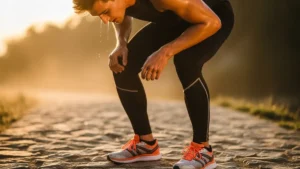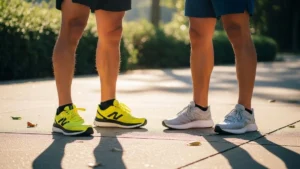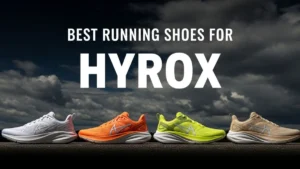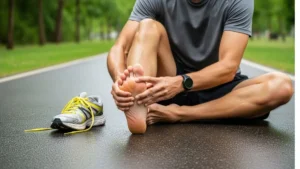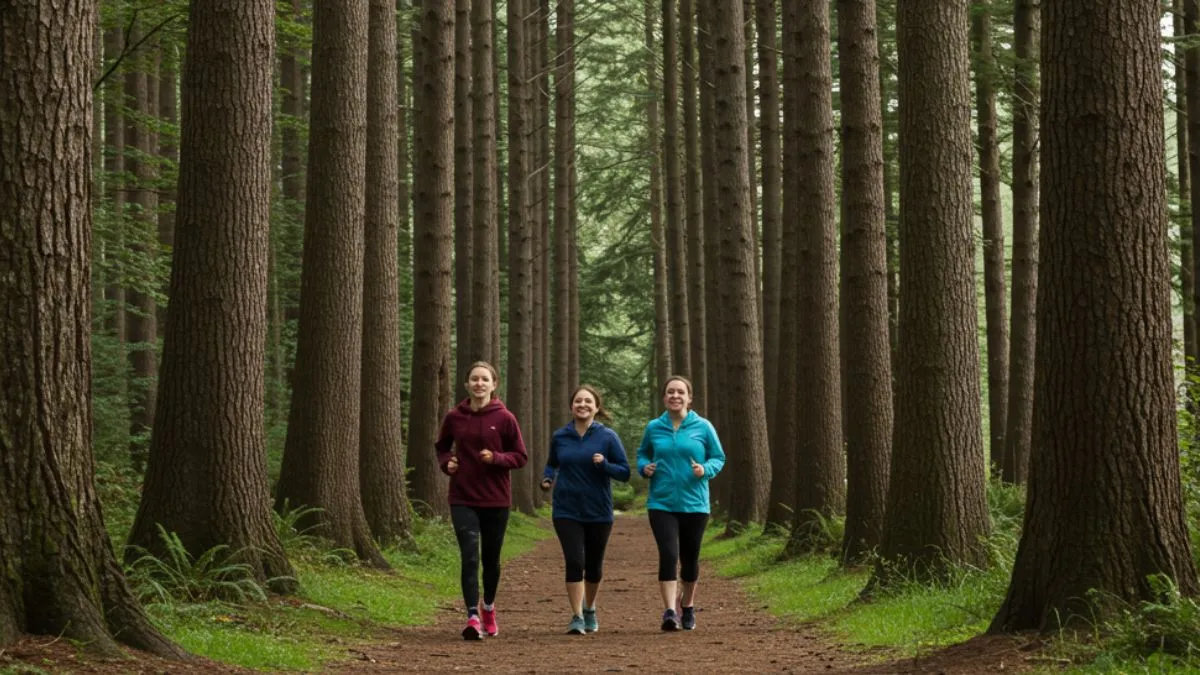
Answering Common Questions First
Where can I find good running trails near me?
You can find good running trails near you by using trail apps, checking city park websites, and asking local runners. Most areas have quiet paths hidden in public parks, near water bodies, or behind neighborhoods that don’t show up on the main maps.
Many runners miss nearby gems just because they’re not marked clearly on Google Maps. Local parks and nature reserves often list them on their websites. Another way is to use apps that show trails based on your location and let you filter by surface, distance, and traffic. Local Facebook running groups are also goldmines for this kind of info.
How do I know if a trail is safe for running?
A trail is safe if it’s well-maintained, has clear markings, enough foot traffic, cell signal, and no history of incidents. Always check recent reviews, avoid isolated areas alone, and let someone know your route before heading out.
Stick to paths with firm surfaces and visible signage. Trust recent reviews on trail apps or local park boards for alerts about wildlife, flooding, or closures. If you’re unsure, go during daylight, leave the earbuds at home, and don’t stray too far from the mapped route.
What’s the best app to discover hidden running trails?
The best app to discover hidden running trails is AllTrails. It shows reviews, route difficulty, maps, terrain type, and even photos from other runners. Komoot and Strava are also great for finding lesser-known paths based on your preferences.
AllTrails is easy to use and packed with real trail insights. If you’re looking for trails with fewer crowds or quieter paths, you can filter by activity level and user reviews. Komoot adds more detail if you’re running off-grid. Strava’s heat maps help you find routes locals actually run.
What Makes a Trail a Hidden Gem?
Less crowded, but accessible
A hidden gem trail stays quiet most days, but it’s still easy to reach. These trails are usually tucked behind parks, by rivers, or off small parking lots most people overlook.
Crowds can ruin a good run. A solid hidden gem won’t feel like a ghost town, but you won’t be dodging bikes or strollers either. You’ll find them just minutes from city centers — often behind schools, small neighborhoods, or tucked near lesser-known parks.
Natural beauty and variety
A trail stands out when it mixes woods, open skies, water, and elevation — all in one run. These are the places where the scenery changes just when your legs start to feel tired.
Look for routes that loop around lakes, climb a ridge, or dip into shaded woods. The more the scenery changes, the easier it feels to keep going. That mix of terrain also keeps your body from taking the same impact step after step.
Unique features like bridges, creeks, or wildlife
Hidden trails often surprise you with things like old bridges, shaded creeks, or the sound of birds you don’t hear in town. These little things make a trail worth running again.
It could be a rusty train bridge that crosses a valley, or a stream that runs beside the path. You might spot deer at dawn or turtles near a pond. These features aren’t just pretty — they give your run personality. That’s what makes the memory stick.
7 Hidden Running Trails Worth Exploring (By Trail Type)
Forest Trail – Ideal for shaded runs
Forest trails offer cool shade, softer ground, and peace you won’t find on sidewalks. They’re usually quiet, full of tall trees, and easy on the eyes and legs.
These are great for summer runs or when you want to unplug. Many loop around old logging roads or wind through city forests. You might hear your own footsteps more than anything else.
River Path – Great for long distance jogs
River paths are flat, straight, and often stretch for miles. You’ll usually find water stations, bathrooms, and clear markers along the way.
They’re perfect if you’re training for a race or just like going far without turning back every mile. Look near levees, canals, or greenways next to water. Most are paved or crushed stone, which keeps the impact low.
Urban Park Trail – Hidden inside city sprawl
These trails run through parks but feel like small escapes. They’re often lined with trees or tucked behind city noise.
You might find them inside large parks, behind playgrounds, or near walking circuits no one pays attention to. The good ones have dirt or mulch paths, a few benches, and just enough turns to keep it interesting.
Coastal Trail – Perfect for sunrise or sunset runs
Coastal trails offer wind, wide views, and a peaceful rhythm from the waves. They’re best early or late when the sky does the work.
You don’t need to run right on the beach. Coastal paths often run just above the water on firm ground. Look for trails that hug the shoreline or connect to scenic outlooks.
Hill Loop – For stamina and elevation
Hill loops push your lungs and legs. These trails rise and fall in quick turns, ideal for interval work or race prep.
Good hill trails don’t need to be long — just steep enough to burn. You’ll often find them on ridges, near old quarries, or looping around local high points. They’re tough, but they build grit.
Gravel Loop – Low-impact on joints
Gravel loops are wide, soft underfoot, and easy to pace. They’re great for beginners or recovery runs.
These loops are often found in nature reserves, public gardens, or the outer edge of sports parks. The surface is forgiving, and the route usually circles a pond or open field. Less pounding, more rhythm.
Mixed Terrain Route – The all-in-one experience
Mixed terrain trails shift between dirt, gravel, stairs, and grass. They challenge your balance and pacing without getting boring.
You’ll find these in large natural parks or conservation areas. The changes in surface keep your legs guessing, and the scenery often changes too. They’re great for building strength and keeping your run fun.
How to Spot These Trails Near You
Search local park directories
The fastest way to find nearby hidden trails is by checking your city or county park websites. They list trail names, access points, maps, and sometimes even trail reviews.
Many of these websites are basic, but the info is gold. Look for PDFs with park maps or dedicated trail pages. These trails don’t always show up on Google Maps, which is exactly why they’re underused.
Use running and hiking apps
Apps like AllTrails, Komoot, Strava, and Gaia GPS help you find nearby trails based on surface, popularity, and reviews. Filter for quiet or less-used routes.
These apps use GPS and crowdsourced data to show loops, distance, terrain, and elevation. Want trails with shade? Filter it. Want soft ground? Sort by surface. Strava even shows heat maps, so you can pick routes others haven’t crowded yet.
Join local running Facebook groups
Local Facebook groups often know more than any app. Members regularly share hidden routes, meet-up spots, and alerts about trail conditions.
Type your city’s name + “runners” or “trail running” into Facebook search. These groups often post GPS maps, photos, and advice you won’t get anywhere else. Bonus: it’s a good way to stay safe and meet fellow runners.
Ask regulars at your local sports store
Runners working at small sports stores often know hidden trails better than anyone. They’ve tried them, logged miles, and helped others do the same.
Skip the big box stores. Go into that local running shoe shop with the cluttered bulletin board. Ask what their go-to loop is when they don’t want a crowd. You’ll usually leave with a route no one talks about online.
When’s the Best Time to Run These Trails?
Early Mornings and Weekdays
Running early in the morning or during weekdays gives you the trail almost entirely to yourself. Most runners hit trails on weekends between 8–11 AM, so heading out at sunrise (6:00–7:00 AM) helps avoid foot traffic and improves safety by staying visible in daylight. Fewer people also mean more encounters with nature and better focus.
Pro Tip: Local park data from Strava and AllTrails often shows peak footfall between Saturday and Sunday mornings. Plan around it for solitude.
Avoid Wet Seasons on Certain Terrain
In many regions, trails become dangerous or impassable during the rainy season. For example:
- Pacific Northwest (USA): Nov–Feb often brings slick mud, making forest trails hazardous.
- Southeast Asia: Monsoon season (May–Oct) floods low-lying paths.
- UK Trails: Winter months create boggy, rutted paths in most moorland areas.
Check regional trail reports or community forums to avoid scheduling runs after heavy rain.
Spring and Fall for Better Footing
Spring and fall are considered the “golden seasons” for trail runners. Here’s why:
- Spring (Mar–May): Soft soil, stable temps (50–70°F), blooming scenery.
- Fall (Sept–Nov): Dry leaves cushion the ground, cooler air boosts endurance.
Footing tends to be firmer and more predictable in these seasons, reducing the risk of slips and ankle injuries.
Safety Tips for Hidden Running Trails
Running on hidden trails means staying alert and prepared. Always let someone know where you’re going, avoid blocking out sounds by wearing both earbuds, and stay aware of wildlife or uneven ground. Carry an ID or GPS tracker for emergencies. These simple steps keep you safe while enjoying the outdoors.
Final Thoughts – You Don’t Need to Run Far to Get Away
You don’t have to run miles or travel far to feel free. Sometimes the best trails are right around the corner, waiting to give you the calm and focus you need. A hidden path nearby can clear your thoughts, ease stress, and spark fresh energy. It’s about finding a place where your mind slows down and your steps feel lighter. Even a short run can remind you how powerful nature’s quiet moments can be when you take the time to notice them.


